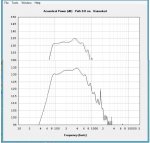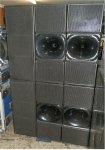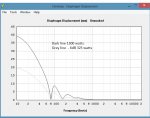Re: 60 Degree DIY Mid Hi
However (as most things in audio) it is not as simple as measuring it. If the horn has a "flare break" (like on constant directivity horns), then the actual-effective size of the horn is somewhere between the edge of the flare break and the outside of the final flare.
Some horns have flare breaks, others don't Some are nice and sharp, and others are rounded.
The purpose of the flare break is to "ease" the transition of the horn. You generally don't want the horn to "stop" quickly, or else some "odd" things start to happen (reflections back into the horn-oddities in the actual pattern and so forth.)
The "inches" is the outside sides of the horn (NOT counting the mounting flange).Yes, I understood you were talking about freq of control, sorry if i didn't convey that in my last post....
In the rule of thumb formula, 10^6 / (degrees x inches )..... what is inches? cone diameter? horn width/ height? box width / height? array width / height? (assuming they array well)
Just trying to get a sense of how to intuitively apply the rule...
BTW, thx for the encouragement a few months back to attend smaart class. Just finished a 3 day that was well worth it. Learned alot, and learned a whole lot more questions !!!~:-o~

However (as most things in audio) it is not as simple as measuring it. If the horn has a "flare break" (like on constant directivity horns), then the actual-effective size of the horn is somewhere between the edge of the flare break and the outside of the final flare.
Some horns have flare breaks, others don't Some are nice and sharp, and others are rounded.
The purpose of the flare break is to "ease" the transition of the horn. You generally don't want the horn to "stop" quickly, or else some "odd" things start to happen (reflections back into the horn-oddities in the actual pattern and so forth.)






